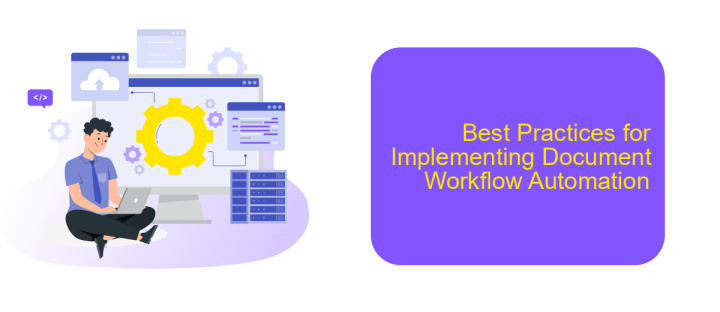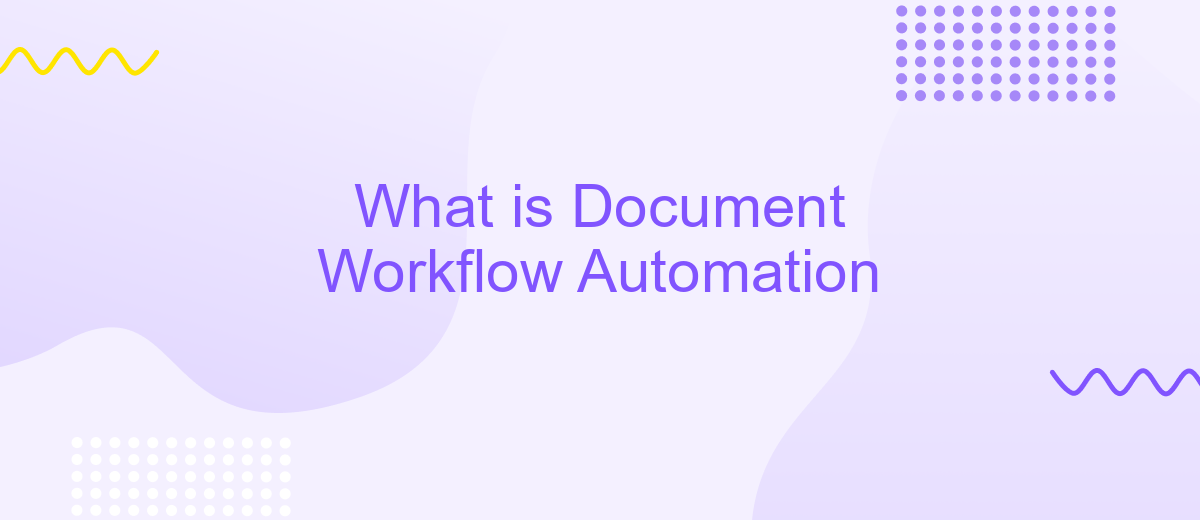What is Document Workflow Automation
Document Workflow Automation refers to the use of technology to streamline and manage document-related tasks and processes. By automating repetitive and time-consuming activities, organizations can improve efficiency, reduce errors, and enhance overall productivity. This article explores the key concepts, benefits, and tools associated with document workflow automation, providing insights into how businesses can leverage this technology for optimal performance.
Introduction to Document Workflow Automation
Document workflow automation is a transformative approach that streamlines the management and processing of documents within an organization. By automating repetitive tasks, businesses can significantly reduce human error, save time, and improve overall efficiency.
- Enhances productivity by automating routine tasks
- Reduces human error and ensures consistency
- Improves document security and compliance
- Facilitates better collaboration and communication
- Provides real-time tracking and monitoring
One essential aspect of document workflow automation is the integration of various tools and services to create a seamless process. Platforms like ApiX-Drive enable businesses to connect their existing applications and automate data transfer between them effortlessly. This integration ensures that documents are processed efficiently and reach the right stakeholders without manual intervention, thereby enhancing the overall workflow.
Benefits of Document Workflow Automation

Document workflow automation offers numerous benefits, significantly enhancing productivity and efficiency within an organization. By automating repetitive tasks such as data entry, document routing, and approval processes, employees can focus on more strategic activities. This not only reduces the likelihood of human error but also accelerates the completion of tasks, ensuring that deadlines are met more consistently. Additionally, automated workflows provide better tracking and auditing capabilities, making it easier to monitor progress and identify bottlenecks in real-time.
Another key advantage of document workflow automation is the seamless integration with other systems and services. Platforms like ApiX-Drive facilitate the connection between various applications, enabling smooth data transfer and synchronization across multiple tools. This integration minimizes manual intervention, reduces the risk of data inconsistencies, and ensures that all systems are up-to-date. Furthermore, automated workflows enhance collaboration by providing a centralized platform where documents can be accessed, edited, and approved by multiple stakeholders, regardless of their physical location.
Components of Document Workflow Automation

Document workflow automation streamlines the management and processing of documents within an organization, enhancing efficiency and reducing manual errors. This system encompasses various components that work together to automate the document lifecycle from creation to archiving.
- Document Capture: This involves digitizing paper documents and importing digital files into the workflow system.
- Document Management: Organizing, storing, and retrieving documents efficiently using metadata and indexing.
- Workflow Automation: Automating the routing, approval, and processing of documents based on predefined rules and conditions.
- Integration Tools: Services like ApiX-Drive facilitate seamless integration with other software systems, ensuring smooth data flow and interoperability.
- Security and Compliance: Ensuring that documents are handled securely and in accordance with regulatory requirements.
- Reporting and Analytics: Providing insights into document workflows and performance metrics to optimize processes.
By leveraging these components, organizations can significantly enhance their document management processes, leading to improved productivity, better compliance, and reduced operational costs. Tools like ApiX-Drive play a crucial role in integrating various systems, making the automation process more efficient and cohesive.
Best Practices for Implementing Document Workflow Automation

Implementing document workflow automation can significantly enhance productivity and reduce errors. To ensure a successful implementation, it is crucial to start by thoroughly analyzing your current document processes. Identify bottlenecks and areas where automation can bring the most value.
Next, choose the right tools and software that align with your specific needs. Platforms like ApiX-Drive can be instrumental in setting up seamless integrations between various applications and services, ensuring a smooth workflow.
- Conduct a comprehensive needs assessment
- Select appropriate automation tools
- Ensure seamless integration with existing systems
- Train your team on new processes and tools
- Continuously monitor and optimize the workflow
Finally, it is essential to involve all stakeholders in the implementation process. Regular feedback and iterative improvements will help in fine-tuning the automated workflows, ensuring they meet the evolving needs of your organization. By following these best practices, you can achieve a streamlined and efficient document workflow.
Conclusion
Document workflow automation offers a transformative approach to managing and optimizing business processes. By automating repetitive tasks, organizations can significantly reduce errors, improve efficiency, and enhance overall productivity. This not only saves time but also allows employees to focus on more strategic and value-added activities, driving growth and innovation.
Moreover, integrating automation tools with existing systems can further streamline workflows. Services like ApiX-Drive facilitate seamless integration, enabling businesses to connect various applications effortlessly. This ensures that data flows smoothly across platforms, enhancing collaboration and decision-making. Embracing document workflow automation is a strategic move that can lead to substantial operational improvements and a competitive edge in today's fast-paced business environment.
- Automate the work of an online store or landing
- Empower through integration
- Don't spend money on programmers and integrators
- Save time by automating routine tasks
FAQ
What is Document Workflow Automation?
What are the benefits of Document Workflow Automation?
How does Document Workflow Automation work?
Can Document Workflow Automation be integrated with existing systems?
What types of documents can be automated?
Time is the most valuable resource in today's business realities. By eliminating the routine from work processes, you will get more opportunities to implement the most daring plans and ideas. Choose – you can continue to waste time, money and nerves on inefficient solutions, or you can use ApiX-Drive, automating work processes and achieving results with minimal investment of money, effort and human resources.


